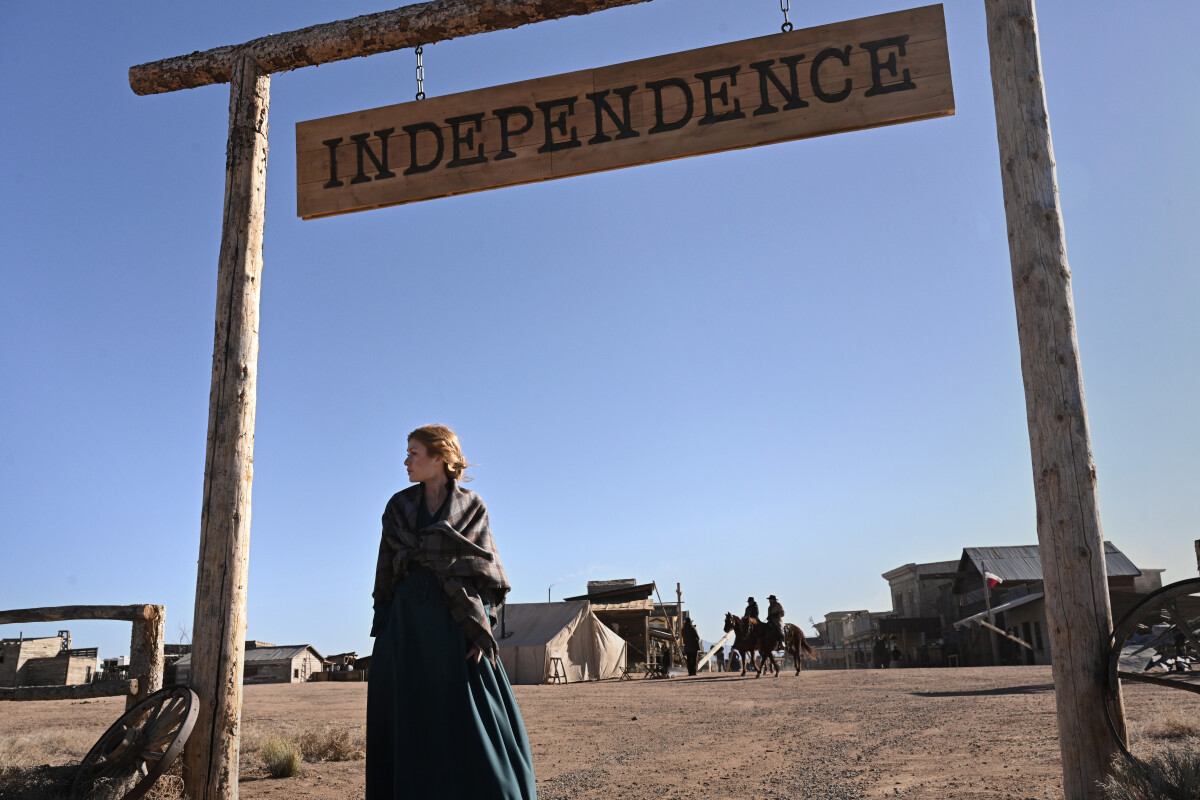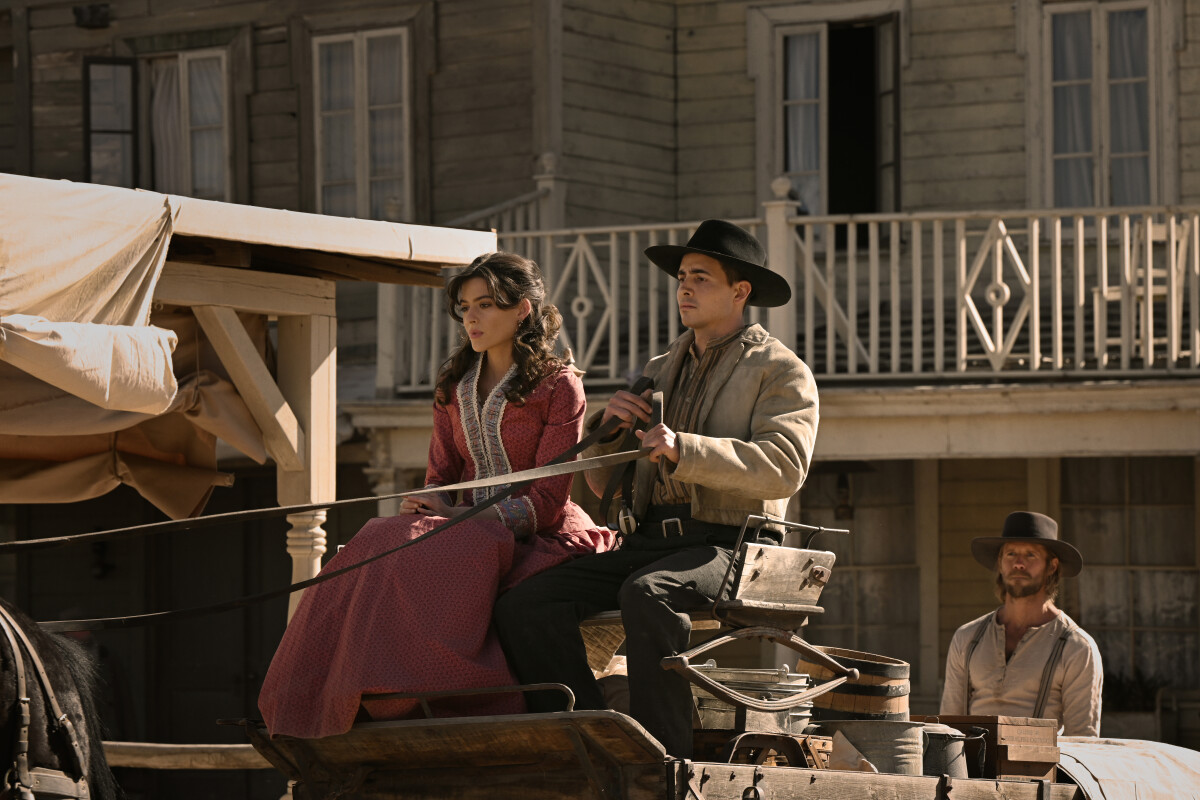Cooler History Corner – Walker: Independence, Diversity During the Reconstruction Era

WFB is being lovely enough to give me a space to nerd out on you. While some of this will be for more light hearted little factoids, we will be talking about some serious topics too.
Seamus Fahey originally didn’t want to pin Walker: Independence down to a specific year. But so many of the cast have said 1870 at this point that I’m comfortable staying within that zone.
As many have said, one of the most intriguing parts about how this show is being structured is we’re giving voices to people and groups who very often have been erased from history. I’ve been waiting (read: furiously theorizing) to find out what year this show is set because we rarely get Westerns that are set during Reconstruction specifically and have the opportunity to address this specific moment. To be able to focus on the characters who would be most affected by this change in society is important. This show also has the opportunity to show where and why Reconstruction wasn’t a success, but how hard certain people were trying to make it succeed.
During Reconstruction, we have Gus, who would be experiencing more rights than before, though racism and its violence is still a threat. But there was still blooming promise, with Black Americans moving to the West to try to share in the gains of the Homestead Act of 1862. All over the country during Reconstruction, Black men not only were in positions in the army or elsewhere in enforcement, but they were being elected to office too because the Union Army was enforcing the ability to vote. Texas elected 52 Black legislators during Reconstruction. If we’re in 1870-74, then George T. Ruby is serving the Texas Senate, a force for civil rights in the state who also pushed the railroad forward.

It’s important to note that during Reconstruction, we would also have Calian’s people experiencing the opposite of the furtherance of rights Augustus is experiencing. After the Civil War, the United States government, who didn’t have a good track record with Indigenous nations before this, took a view that allowing tribal governments was almost the same as allowing the Confederacy (Cable, 2019)1. And for most, this was likely the thinnest veil of cover for genocidal policies that they were already performing. But policy became solidified during Reconstruction’s as the United States sought to have a unified country.

As a Chinese immigrant, Kai is existing in a country where, despite the fact that these immigrants built the railroads, the past fifteen years have been spent with states passing laws to try to ban them or prohibit specific cultural practices. California attempted to ban Chinese and Mongolian immigrants in 1858 but it was ruled unconstitutional. During the 1870s, anti-Immigrant sentiment rose as the economy went into a downturn and people looked for an excuse of who to blame. If Kai has family or friends back in California they may be facing off with the Order of Supreme Caucasians (no, seriously, they called themselves that) in 1876, which formed to target the Chinese populace.

Abby, her husband, and Tom Davidson all hail from Boston, which Abigail describes as “warped, crooked, cruel.” This is not untrue, as corruption was deep in the political structure city. The wealthy had their stranglehold and knew who to pay off to make ballot stuffing happen, or which police to pay to enforce “the law” against certain groups of people. We don’t know specifically who William Collins was struggling against in his job as a police officer with harbor views. In the 1870s, illegal cargo coming into the country was mostly from people trying to avoid paying taxes or moving stolen goods. Drugs weren’t prohibited yet, though opium smoking was sporadically illegal in different cities and moonshiners were targeted harshly due to tax avoidance. So, it will be interesting to see how the corruption of Boston will come to bear, whether through Abby’s family or the Davidsons’.

Lucia and Luis are facing an uphill battle in trying to keep their land and property. Even though this property may have been in the family history from before Texas was a Republic, the attitude towards Mexicans and Mexican Americans was certainly not welcoming. Lynching was not uncommon and if the Davidsons decide they want to take the Reyes property while he is sheriff, he could certainly make up an excuse for why he needs to send the deedholder of the family to the gallows. It will be interesting to see where they bring the Reyes family. Besides writing well-rounded characters who have their own human desires, like having a crowd applaud your singing, there are a multitude of views possible to examine in this family during this time period, whether Pro-U.S., pro-Spain, pro-Independent Mexico, or Pro-Leave Me Alone, I Just Want to Raise My Cows.

Kate Carver is out here working for the Pinkertons. In 1858, Kate Warne argued herself into a job being the Pinkertons’ first female detective. She was so successful at her job that Allen Pinkerton put her in charge of a female detective branch. It is important to note that the cursory history of the agency tries to focus on how the Pinkertons foiled outlaws, train robberies, and counterfeiters. Certainly, if we look at its founder, Allen Pinkerton was a staunch abolitionist who worked with the likes of John Brown from Harper’s Ferry fame/infamy. But the agency began being more than a group of spies who assisted in bringing people to justice. They also instigated violence through infiltrating groups, murdered innocent people, and lied on the stand to obtain convictions. Companies began purchasing them as groups of thugs to beat union organizers. I hope Independence finds a balance in telling the inspiring story of a female detective and the corrupt agency she works for.

Independence is a nexus town where cultures and information meet. Having the potential for a railroad and having telegraphs available makes it miles ahead of many towns in the United States at this time. The railroad changes the landscape for everyone in the country. If you lived near one and it didn’t displace you from your land, economically you may luck out. If your town was not blessed this way, opportunity would begin withering away. The shift from agrarian to urban industrial life began with earnest as not only new technologies disrupted the status quo but people moved for work as the transportation of goods shifted and people began relying less on needing everything to be grown or built within a 30 mile radius. Lucky for the show’s “scenes with a train” budget – the federal charter for the Texas & Pacific dropped in 1871 to create a southern transcontinental railroad, but the funding was shaky and building faced delays. The funding for the Southern Pacific Railway also faced delays, with funding and a charter not being secured until 1877. The railroad might be coming through eventually, but the white doves shouldn’t count on seeing it soon.
Learn more about the History behind Walker: Independence! Check out the historical connection between Austin, Tx and Independence, and the Civil War and Reconstruction Eras in which WIndy takes place!
1. Cable, R. (2019, June 11). Native reconstruction. Stanford Humanities. https://shc.stanford.edu/news/stories/native-reconstruction






Leave a Reply